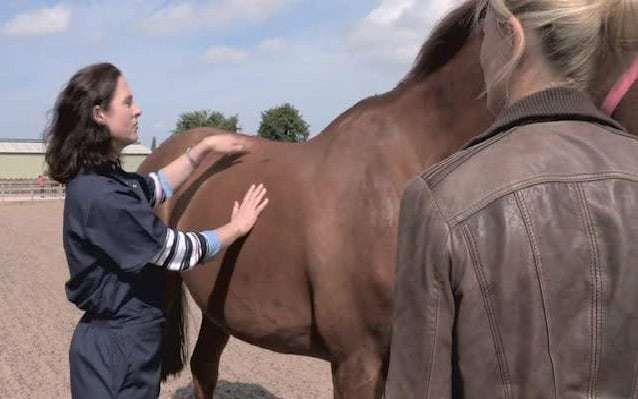Vet Essentials: Assessing topline

Our series Vet Essentials takes a look at some of the common health issues affecting horses. In this companion article to the episode ‘Care of the competition horse’ we explain all about assessing topline.
The muscle cover of competition horses is often scrutinised as a sign of fitness and desirable appearance; but do we really know what we are looking for when assessing this and why?
Assessing topline and muscle condition
We all want our horses to be healthy, fit and well prepared for whatever activities we ask of them. We dedicate an enormous amount of time to training and improving performance, so how do we know if our hard work has paid off?
Static evaluation
Looking at your horse when it is standing still is a good time to evaluate his topline. Don’t forget that a well-developed topline doesn’t just look good! The muscles of the neck, back and croup stabilise the core, give elevation to movement, enable your horse to carry himself in an outline and are key in preventing fatigue and therefore injury.
It is a common mistake to look for a rounded outline of the crest of the neck and mistake it for muscle, when more often than not a well-defined crest actually represents fat! Muscle is only present below a structure called the nuchal ligament.
To find the nuchal ligament, feel behind the poll for a thick rubber band like structure running down to the withers. As you get further from the poll, the ligament becomes further and further away from the base of the mane. Anything above this ligament is not muscle, just fat. This should obviously be minimal in a fit athlete.
Below the ligament, the muscles of the neck should be firm and well defined. The epaxial muscles of the back run on either side of the supraspinous ligament – the line down the middle of the back. They should be well developed, giving a rounded appearance.

Dynamic evaluation
The trot is an ideal pace at which to evaluate the locomotor or ‘powerhouse’ muscles of the fore and hind quarters. Again they should be well defined. If these areas look rounded but you cannot identify individual muscles moving it is likely that there is a layer of fat covering whatever muscle may or may not be present. This is a common mistake – to confuse ‘condition’ with muscular fitness.
The hindquarters should appear proportionally larger than the forequarters, transmitting the power required to establish a light forehand. A natural, balanced outline with good elevation gives an indication that the core muscles and topline are working effectively.
Recovery from exercise
This parameter often gets overlooked when riders are assessing muscle health and fitness and yet could be argued is the most important. The muscles are the end point of respiration in the body, where oxygen and glucose is turned into mechanical energy. An equine athlete whose muscles are fit for the job should not show signs of early fatigue and should be able to clear the oxygen debt and waste products from their muscles after exercise efficiently. If your horse is still puffing several minutes after a workout, it might be worth taking steps to address their muscular fitness. If the problem persists, you should ask your vet to check them out as this symptom could also result from problems with the respiratory or cardiovascular systems.
To read more about muscles, click here.
Vet Essentials: Care of the competition horse is brought to you in association with Equitop Myoplast.






